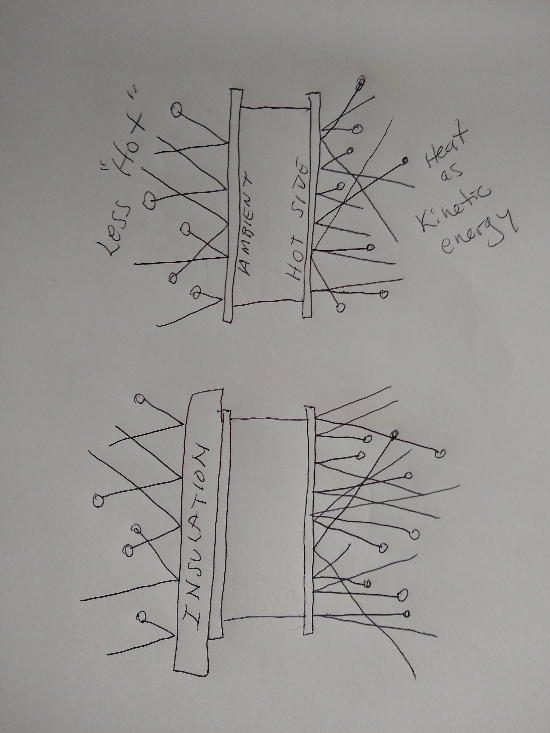I debated for a few seconds; should this go here or in the thermodynamics thread ?
Well Tesla emphasized the fact that heat is not a substance, not a fluid, but rather a form of energy, so he argued that a heat engine sending heat to a sink was not an absolute requirement and a heat engine might be constructed where no heat at all would pass through, but rather all the heat entering the engine could be converted to work.
In my various experiments to test this idea, one thing I found to be consistently true and measurable (so far) is that insulating the unheated side of the engine causes the engine to run better, faster, stronger.
This is the opposite of what most people probably would expect. If heat is flowing through the engine from the hot to the cold side, and this FLOW of heat, like a river turning a water wheel, is what makes the engine run, then insulation anywhere in the path would cause a blockage. The heat would build up inside the engine and it would be unable to run.
So insulating the cold side should at least cause the engine to slow down, even if the insulation is not perfect, the flow would be reduced to one degree or another.
It crossed my mind recently however, while conversing with John Corey that if heat is kinetic energy, the impact of fast moving air molecules, then, as far as a heat engine is concerned, insulation on the cold side of the engine is functionally equivalent to making the cold side colder, increasing the temperature difference because fewer energetic "hot" air molecules would be making contact with that side of the engine (from the outside).
Here is a sketch to help illustrate what I mean:

- Resize_20220924_170319_9101.jpg (225.87 KiB) Viewed 5725 times
The top picture is an LTD type displacer chamber without insulation, showing the "heat" or number of hot air molecules or atoms randomly crashing into the engine.
The bottom illustration is the same engine with the cold side insulated. It seems obvious that fewer hot air molecules will impact the cold side. Less ambient heat will be able to reach the engine from that side.
As far as the air inside the engine knows, the cold side is now even colder!
A consequence of the actual nature of heat as kinetic energy and not some kind of fluid held in "reservoirs" and compelled by some mysterious force akin to gravity to flow from hot to cold.
Heat in a gas, like air is simply random motion. It is not "flowing" anywhere. The insulation prevents this kinetic energy from impacting the engine, effectively making it seem colder. Fewer impacts over a given time period.
So, theoretically, perfect insulation might be the effective equivalent of a cold side at absolute zero.
At absolute zero ALL the heat entering the engine would be converted to work, so there would be no heat remaining to "flow" through to the sink.
Perfect insulation would consequently have the same effect as the cold side being at absolute zero.
No heat crossing the boundary.
I'll be interested to hear (or rather read) the response to this idea/theory, but I don't think he had read that particular message as yet. So far he has categorized my experiments as "anecdotal".
Some of the videos of experiments he said he could not watch due to "too much advertising".